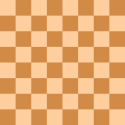Hastings (turniej szachowy)
| a | b | c | d | e | f | g | h | ||
| 8 | 8 | ||||||||
| 7 | 7 | ||||||||
| 6 | 6 | ||||||||
| 5 | 5 | ||||||||
| 4 | 4 | ||||||||
| 3 | 3 | ||||||||
| 2 | 2 | ||||||||
| 1 | 1 | ||||||||
| a | b | c | d | e | f | g | h | ||
Turniej szachowy w Hastings (ang. Hastings International Chess Congress) – najstarszy na świecie cykliczny turniej szachowy, rozgrywany corocznie na przełomie lat w angielskim mieście Hastings.
Historia
Turniej główny nosi nazwę Hastings Premier i po raz pierwszy rozegrany został na przełomie 1920 i 1921 roku. Aż do edycji 2003/04 był rozgrywany w formule kołowej z udziałem od 10 do 16 zawodników. W edycji 2004/05 zastosowano system pucharowy, a od kolejnej – system szwajcarski. Poza turniejem głównym odbywają się również turnieje niższej rangi.
W czasie wieloletniej historii, poza edycjami noworocznymi odbyły się również cztery turnieje letnie, z których najsłynniejszym był turniej rozegrany w dniach od 5 sierpnia do 2 września 1895 r. z udziałem m.in. Michaiła Czigorina, Emanuela Laskera, Siegberta Tarrascha i Wilhelma Steinitza, a w którym sensacyjnym zwycięzcą został Harry Pillsbury[1].
W turniejach w Hastings startowało jedenastu z pierwszych dwunastu mistrzów świata (jedynym, który nie wystąpił w Hastings był Bobby Fischer): Wilhelm Steinitz (1895), Emanuel Lasker (1895), José Raúl Capablanca (1919, 1929/30, 1930/31, 1934/35), Aleksandr Alechin (1922, 1925/26, 1933/34, 1936/37), Max Euwe (1923/24, 1930/31, 1931/32, 1934/35, 1945/46, 1949/50), Michaił Botwinnik (1934/35, 1961/62, 1966/67), Wasilij Smysłow (1954/55, 1962/63, 1968/69), Michaił Tal (1963/64), Tigran Petrosjan (1977/78), Boris Spasski (1965/66) oraz Anatolij Karpow (1971/72). Jednak tylko dwóch z nich tytułowało się mistrzami świata podczas uczestnictwa w zawodach (Emanuel Lasker w 1895 oraz Aleksandr Alechin w 1933/34)[2].
Poza mistrzami świata, w turniejach Hastings Premier startowały również dwie mistrzynie świata: Vera Menchik (siedmiokrotnie, pomiędzy edycjami 1929/30 i 1936/37) oraz Nona Gaprindaszwili (1964/65). W teorii debiutów nazwę Hastings nosi jeden z wariantów gambitu hetmańskiego nieprzyjętego, który powstaje po posunięciach: 1.d4 d5 2.c4 e6 3.Sf3 Sf6 4.Gg5 h6 5.G:f6 H:f6 6.Sc3 c6 7.Hb3. Po raz pierwszy pozycja ta powstała w partii Victor Berger – George Alan Thomas rozegranej podczas edycji 1926/27[3].
Zwycięzcy dotychczasowych turniejów
edycje noworoczne (Hastings International Chess Congress)
edycje letnie (Summer Congress)
| Edycja | Lata | Zwycięzcy |
|---|---|---|
| 1 | 1895 | |
| 2 | 1919 | |
| 3 | 1922 | |
| 4 | 1995 |
Przypisy
- ↑ Scottish champion wins Hastings
- ↑ Congress History
- ↑ David Hooper, Kenneth Whyld The Oxford Companion to Chess, Oxford University Press (1992), str 170, ISBN 0-19-280049-3
- ↑ Gawain Jones wins 88th Hastings Masters
- ↑ Seven tie for first place in Hastings Masters 2014
- ↑ 90th Hastings Congress 2014-15
- ↑ Hastings 1995. [dostęp 2009-06-21].
Bibliografia
- Previous Premier winners » The Hastings International Chess Congress (ang.)
- Chess tournaments in Hastings. endgame.nl. [zarchiwizowane z tego adresu (2014-10-23)]. (ang.)
Linki zewnętrzne
Media użyte na tej stronie
Contestants at the Hastings 1895 International Chess Tournament
Autor: Cburnett, Licencja: CC-BY-SA-3.0
Dark rook on transparent square, default size 45x45
Autor: Cburnett, Licencja: CC-BY-SA-3.0
Dark knight on transparent square, default size 45x45
Autor: Cburnett, Licencja: CC-BY-SA-3.0
Dark bishop on transparent square, default size 45x45
Autor: Cburnett, Licencja: CC-BY-SA-3.0
Dark king on transparent square, default size 64x64
Autor: Cburnett, Licencja: CC-BY-SA-3.0
Dark pawn on transparent square, default size 45x45
Autor: Cburnett, Licencja: CC-BY-SA-3.0
Dark queen on transparent square, default size 45x45
Autor: Cburnett, Licencja: CC-BY-SA-3.0
Light pawn on transparent square, default size 45x45
Autor: Cburnett, Licencja: CC-BY-SA-3.0
Light queen on transparent square, default size 45x45
Autor: Cburnett, Licencja: CC-BY-SA-3.0
Light knight on transparent square, default size 45x45
Autor: Cburnett, Licencja: CC-BY-SA-3.0
Light rook on transparent square, default size 45x45
Autor: Cburnett, Licencja: CC-BY-SA-3.0
Light king on transparent square, default size 64x64
Autor: Cburnett, Licencja: CC-BY-SA-3.0
Light bishop on transparent square, default size 45x45
Flag of England. Saint George's cross (a red cross on a white background), used as the Flag of England, the Italian city of Genoa and various other places.
The flag of Navassa Island is simply the United States flag. It does not have a "local" flag or "unofficial" flag; it is an uninhabited island. The version with a profile view was based on Flags of the World and as a fictional design has no status warranting a place on any Wiki. It was made up by a random person with no connection to the island, it has never flown on the island, and it has never received any sort of recognition or validation by any authority. The person quoted on that page has no authority to bestow a flag, "unofficial" or otherwise, on the island.
Flag of the Socialist Federal Republic of Yugoslavia (1946-1992).
The design (blazon) is defined in Article 4 of the Constitution for the Republic of Yugoslavia (1946). [1]
Flag of the Socialist Federal Republic of Yugoslavia (1946-1992).
The design (blazon) is defined in Article 4 of the Constitution for the Republic of Yugoslavia (1946). [1]
Autor: Pedro A. Gracia Fajardo, escudo de Manual de Imagen Institucional de la Administración General del Estado, Licencja: CC0
Flaga Hiszpanii
Flag of Israel. Shows a Magen David (“Shield of David”) between two stripes. The Shield of David is a traditional Jewish symbol. The stripes symbolize a Jewish prayer shawl (tallit).
Łatwo można dodać ramkę naokoło tej grafiki
The Flag of India. The colours are saffron, white and green. The navy blue wheel in the center of the flag has a diameter approximately the width of the white band and is called Ashoka's Dharma Chakra, with 24 spokes (after Ashoka, the Great). Each spoke depicts one hour of the day, portraying the prevalence of righteousness all 24 hours of it.


















































